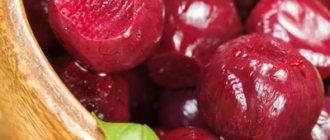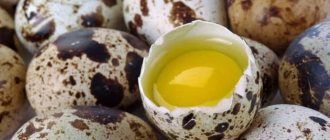Which part of the pumpkin is the healthiest?
The plant saturates the body with essential substances, micro- and macroelements. But which part should you pay attention to: the pulp or the seeds?
Let's consider the composition of the pulp. The plant contains an incredible amount of vitamins B, A and E, as well as C and PP. This rare vitamin K is also found in large quantities in pumpkin. Pumpkin for gastritis of the stomach helps digestion processes. And the potassium it contains reduces the likelihood of heart attack and other cardiovascular diseases. In addition to potassium, there is a lot of zinc and iron, magnesium. Fiber in the pulp normalizes digestion and helps remove various toxins from the body.
But the seeds are also recommended for consumption by many scientists, right? Indeed, their composition is almost the same as that of the pulp. The only difference is that the seeds contain salicylic acid. Its excess can harm people with increased gastric secretion. Whether to eat seeds or not depends on the form of the disease.
You can’t ignore pumpkin juice either. With the right dosage, it becomes a medicinal drink. Pumpkin juice is rich in pectin, which improves stomach function. However, the drink does not help everyone. For example, it is not recommended to drink it for people with low acidity.
Pumpkin - health benefits and harms
The beneficial properties of the product deserve a whole treatise. Traditional medicine successfully uses this berry to treat a variety of diseases. Below are just a few of its beneficial qualities:
- Increases visual acuity due to the excess vitamin A it contains. However, an excess of this vitamin can cause harm, so it is better to avoid excessive consumption of pumpkin.
- Good for digestion. The large amount of fiber in the product makes food easier to digest.
- Constant consumption of pumpkin porridge will help hypertensive patients stabilize and reduce blood pressure levels. The presence of pectin fibers allows you to remove toxins, toxic substances and other waste products from the body.
- Strengthens the walls of blood vessels.
- It has an anti-inflammatory and immune-strengthening effect.
This is not all that pumpkin is good for the body. Its use improves sleep, tissue regeneration, it even helps in the treatment of tuberculosis, and some oncologists claim that people whose diet constantly includes pumpkin dishes are less likely to get throat cancer. Cosmetologists readily include pumpkin extracts in creams and lotions, and use it to make personal hygiene products. Thinking about whether pumpkin is good or bad for the body, doctors are increasingly talking about its unconditional benefits.
Pumpkin - benefits and harm to the liver
Pumpkin, whose benefits and harm to the body in liver diseases are observed in equal measure, is also notable for the fact that the pectins, carotenoids, vitamins, calcium, magnesium and iron salts it contains facilitate the restoration of damaged liver cells. They prevent them from dying due to diseases of cirrhosis, hepatitis, and various helminthic infections - this is why pumpkin is useful for the liver. Since the pectins and mineral salts contained in it help eliminate cholesterol and have a diuretic effect, dishes made from this product help restore hepatocytes and cleanse the body as a whole.
For liver diseases, doctors recommend eating baked pumpkin, any porridge with it, and even a decoction of pumpkin stalks, which is prepared as follows:
- Finely chop 15-20 g of fresh stalks.
- Pour in 2 glasses of clean water.
- Bring to a boil and simmer over low heat for about 20 minutes.
- Strain the resulting decoction and consume within 1 day.
You can also drink pumpkin juice - it has an excellent choleretic and cleansing effect on the body. The oral dosage regimen is as follows: every day for a month you need to drink 12 glasses of fresh pumpkin juice. This method will help restore liver cells, however, such juice may not be tolerated by the body; when consuming it, the individual characteristics of the patient must be taken into account.
It should be mentioned that treatment with pumpkin products is effective only in the initial stages of liver diseases in combination with medications, and patients should not get carried away with fried pumpkin dishes - they contain practically no useful substances and place a large load on the liver, which can lead to irreversible consequences. We can say that eating fried pumpkin is harmful.
Pumpkin for diabetes - benefits and harms
A person with diabetes is primarily concerned with ensuring that the level of glucose in his blood does not exceed a certain norm, so eating pumpkin for diabetics is not only acceptable, but recommended by endocrinologists. After all, this autumn berry contains folic acid, calcium, magnesium and potassium, which will help patients in the following cases:
- strengthen the walls of blood vessels;
- get rid of cholesterol plaques;
- remove excess fluid from the body.
The benefit of pumpkin for the human body in diabetes is that products made from it stimulate the production of its own insulin, so dishes from this berry should always be on the table of a person suffering from this disease. The diuretic effect of pumpkin leads to getting rid of extra pounds; you can use it to prepare various desserts that will replace chocolate and sweets that are harmful to diabetics.
You can eat not only dishes made from this berry, but also pumpkin seeds. They have a laxative and diuretic effect, they contain many vitamins and essential oils that promote rapid saturation. The harm of eating pumpkin dishes for diabetics often lies in individual intolerance to some substance from its components. In the later stages of the disease, patients should not drink pumpkin juice.
Benefits of pumpkin for the stomach
Dieticians include boiled and stewed pumpkin dishes in the menu of people suffering from high levels of hydrochloric acid in the stomach and duodenal ulcers. Mashed porridge from it promotes scarring of ulcers and their healing. The benefit of pumpkin for the body as a whole, including the gastrointestinal tract, lies in the large amount of fiber contained in this berry, however, drinking fresh juice from it will be harmful to people suffering from peptic ulcers.
Is pumpkin good for pancreatitis?
Pumpkin, its benefits and harm to the body with pancreatitis have been known for a long time. It has alkalizing properties and stimulates pancreatic secretion, so patients in the acute stage of the disease can eat it immediately after the end of hunger. The boiled or steamed product is pureed, pureed and given to the sick. The beneficial properties of pumpkin suggest the use of dishes made from it for patients with chronic pancreatitis. They are allowed to eat casseroles, puree soups, fried pumpkin is harmful for such patients.
How is pumpkin good for gout?
Gout is characterized by the accumulation of uric acid in the body, which settles in the form of crystals on the joints and is carried through the blood throughout the body, which leads to serious disruptions in its functioning and irreversible consequences. The properties of pumpkin to enhance the filtration functions of the kidneys facilitate the course of this disease and prevent the deposition of urate crystals.
When the body produces a lot of stomach acid
Focus on the pulp - it suppresses excess acid. Baked pumpkin for gastritis is absorbed perfectly and is not capable of harming the inflamed walls of the stomach. Moreover, it calms inflammation, promoting rapid healing. Pumpkin oil is also useful in its own way. The vegetable contains 4 times more fiber compared to carrots and allows you to cleanse the body of toxins. We can conclude that pumpkin for gastritis with high acidity is completely allowed.
The same goes for seeds. Just don’t overuse them—eating seeds with spoons won’t do you any good. Otherwise, complications cannot be ruled out. In moderate quantities, pumpkin seeds will only be beneficial for gastritis.
How much pulp and seeds should I eat daily? Each case is individual. Therefore, we recommend that you discuss this issue with your personal physician. He will study the disease in detail and suggest the optimal amount of vegetables.
Pumpkin recipe for stomach diseases
Porridge prepared with pumpkin will not only benefit the stomach, but will also be an excellent addition to the daily menu.
You will need: 500 g – peeled pumpkin pulp; 1.5 cups – milk; 200 ml – water.
The pumpkin is cut into small cubes, transferred to a cooking container, and water is added. After the vegetable becomes soft, it must be crushed to a puree. Then pour in the milk, put the container on low heat, and after boiling, boil for 10 minutes. At the end, you can add a small amount of olive or butter, or natural honey. This dish relieves inflammation and a burning sensation, since pumpkin cooked in this form has enveloping properties.
When acidity is low
Pumpkin for gastritis with low acidity is also allowed, but you definitely shouldn’t count on a powerful therapeutic effect. Dishes can remove toxins and prevent food fermentation in the gastrointestinal tract, normalize digestion. Do not forget to follow the dosage, eat it in small quantities and only after consulting a doctor.
Pumpkin has proven itself well as a drink for atrophic gastritis. Natural medicine quickly cleanses the body of accumulated salts, improves liver function and normalizes digestion. Therapeutic dosage – 100-120 ml, time of use – after each meal. Drink pumpkin juice daily for 1-2 weeks. The duration of treatment will depend on the form and severity of the disease.
Is it possible for gastritis?
If you have problems with the gastrointestinal tract, pumpkin consumption is allowed and even encouraged. This vegetable will be especially useful for diseases associated with high acidity. It has a beneficial effect on the digestive process, stimulating the production of bile in the liver. This helps to speed up the digestion process and avoid stagnation of food masses with the resulting rotting processes.
In what form should I use it?
Raw pumpkin is a very dubious pleasure if you have a stomach problem. It will be difficult for an inflamed organ to digest a raw product. It is much healthier to eat boiled, stewed pieces. There are recipes for fried pumpkin too. But, like any other food cooked in a frying pan, the fruit is not recommended for consumption. The juice also worked well. Firstly, it is quite easily and quickly digested. Secondly, it can be stored in the refrigerator for a long time while maintaining all its beneficial properties.
For people with chronic gastritis, pulp containing a huge amount of vitamins is recommended. Just do not use spices when cooking - they greatly irritate the walls of the stomach. Regardless of the form of the disease, the food consumed should not be too hot or, conversely, cold.
Raw pumpkin: harmful
During heat treatment, most of the beneficial substances of pumpkin are lost. That is why adherents of a healthy lifestyle and balanced diet prefer to consume it raw in the form of juices, smoothies and as an ingredient in salads. In this case, pumpkin is contraindicated for people suffering from low stomach acidity and intestinal colic.
Raw pumpkin can harm tooth enamel and is contraindicated in case of low stomach acidity or colic.
Particular attention should be paid to eating raw vegetable seeds: they harm tooth enamel. After eating them, you need to rinse your mouth with water or brush your teeth.
You should not eat raw pumpkin seeds in large quantities during pregnancy: this can lead to premature birth.
Raw pumpkin juice should be consumed with caution. The drink perfectly cleanses the body, but in case of digestive disorders it can cause nausea, bloating and diarrhea.
Pumpkin soup - a proven option
The main ingredients are vegetables: onions and carrots, potatoes, orange vegetables. To prepare the broth, put a pan of water on the fire, grate the carrots and onions. When boiling, the broth cooks for 7 minutes. Potatoes cut into small cubes are sent into the broth, and the pan itself is covered with a lid. After 5 minutes, you can add the pumpkin, cut into small pieces. The soup is cooked until done. Before using, let it cool and serve warm.
Pumpkin soup for gastritis is a healthy and nutritious dish. But you can also puree it. The only difference from the first recipe is the larger number of ingredients. When they are cooked, the contents of the pan need to be ground in a blender. Should you add greens to pureed soup? If desired, you can cook it with dill and parsley. It is not recommended to add seasonings.
When it comes to dietary pumpkin soup for gastritis with high acidity, it is advisable not to add too much onion to the dish. And those who cook puree soup get onion particles when grinding the ingredients.
Raw pumpkin: benefits
The beneficial properties of pumpkin are maximized if consumed raw. You can make juice from the orange vegetable, add whole slices to side dishes, salads, or extract pumpkin oil from the pulp.
Raw pumpkin will help you lose weight, remove toxins from the body and improve vision
Benefits of raw pumpkin for the body:
- Strengthening tissue regeneration
- Improved vision
- Normalization of pressure
- Help with weight loss
- Relief from nervous disorders and insomnia
- Removing toxins and excess fluid
- Strengthening the immune system
- Normalization of digestive functions
Eating raw pumpkin after a hearty meal helps it digest quickly. Pumpkin juice is useful for anemia and liver diseases. It removes cholesterol and increases hemoglobin, relieves constipation and improves blood coagulation.
Pumpkin salad recipe for gastritis
To prepare the salad, permitted fruits and vegetables are used, as well as a medicinal plant. For example, pumpkin goes well with apples and carrots. The ingredients are thoroughly washed and cut into slices, and then mixed.
If the acidity is low, you can season the salad with a little lemon juice. It will help raise acidity levels. If desired, the salad can be dressed with oil, but just a little bit. For example, you can add pumpkin. A small amount of sugar will help enhance the taste.
Pumpkin pulp dishes
Most experts allow eating pumpkin for gastritis. But it is also recommended to use other foods that do not irritate the mucous membrane of the digestive system. It is possible to prepare first courses from pumpkin for pathology. How to use pumpkin for pathology directly depends on a person’s taste preferences. Most often, soup is prepared from this product.
To do this, you need to take a few liters of water and boil it. Add a whole onion and chopped carrots to the pan. After 20 minutes, add peeled and chopped pumpkin. After preparing the ingredients, the soup is ground in a blender. This dish is useful for diseases with low acidity.
Vegetables with pathologies are recommended for people to be baked. The product must be washed and placed in an oven preheated to 180 degrees for 60 minutes. After cooking, the baked vegetable is cut into pieces. If your blood sugar level is low, you can add a small amount of honey. The dish is also seasoned with butter.
There are various dietary dishes made from pumpkin for pathology. Pumpkin porridge has a very good effect on the digestive tract. In case of pathology, it is recommended to cook it in water. Vegetable pieces are boiled in water until fully cooked. After this, they must be crushed with a blender. A small amount of oil is added to the dish.
If you have gastritis, you can eat raw pumpkin. If the patient does not have mucosal irritation, then this product is used to prepare a salad. To do this, take a vegetable, a carrot and an apple. All ingredients are thoroughly washed and crushed using a grater. If a person has low acidity, it is recommended to season the salad with lemon juice. You can also use a small amount of oil for dressing. In case of exacerbation of gastritis, raw pumpkin is not recommended.
There are a huge number of pumpkin recipes. Quite often, in cases of pathology with high acidity, dishes are prepared in the form of puddings. To prepare the dish, you need to take the pulp of the fruit and cut it into small cubes, which are boiled in milk for 10 minutes. After this, semolina is poured in. The dish is boiled for another 10 minutes. After this, beaten yolks and whites are added to the composition. The dish is thoroughly whipped until pureed and baked in the oven for 10 minutes.
Due to the presence of a large number of recipes, it is possible to select the most appropriate option for the patient.
Benefits of pumpkin for women
Women of all ages should not ignore this golden beauty. Ladies who care about their health and beauty can consume this vegetable in any form - raw, baked pumpkin and its seeds will be especially useful.
Using pumpkin dishes you can lose weight, remove cholesterol and heavy metal compounds from the body. The beneficial properties of pumpkin have been identified in the treatment of gynecological diseases. The pulp of a ripe vegetable is indicated for infertility, cervical erosion, female inflammation, and vaginitis.
The use of pumpkin is recommended for women with gynecological diseases, menopause and pregnancy
It is useful to eat pumpkin dishes for pregnant women - they will supply her body with calcium, magnesium, iron and help prevent anemia. The use of pumpkin during menopause is indicated. Dishes made from orange vegetables will help reduce the unpleasant symptoms of this period and relieve nervous tension.
Natural pumpkin masks will help preserve the youth and beauty of women’s skin. They will remove wrinkles, restore elasticity and firmness of the skin, get rid of acne, oiliness, and cleanse pores.
Recommendations







